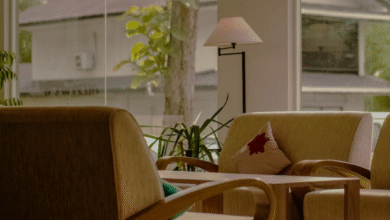The Magic of a Tiny Bit of Kindling: Igniting More Than Just Fires

Introduction: The Small Spark That Starts a Blaze
In the world of fire-making, the term “kindling” refers to small, easily combustible materials used to ignite more significant pieces of wood. This seemingly mundane item is crucial in starting fires for warmth, cooking, or ambiance. However, a tiny bit of kindling extends beyond its physical use, symbolizing the small yet significant actions or elements that can spark more extensive changes in various aspects of life.
The Role of Kindling in Fire-making
Kindling bridges the initial flame and the larger logs that sustain a fire. It is typically made of dry, lightweight materials like twigs, leaves, paper, or small wood chips. Kindling’s efficiency lies in its ability to ignite rapidly and produce sufficient heat to do so more significant, less flammable pieces of wood.
In practical terms, the size, dryness, and arrangement of kindling are critical. A tiny bit of kindling, properly placed, can significantly impact the success of building a fire. This principle is essential for campers, survivalists, and anyone who relies on fire for warmth or cooking.
Beyond the Hearth: Kindling as a Metaphor
A tiny bit of kindling also metaphorically represents small actions or ideas that can ignite significant change. Just as a spark can lead to a roaring fire, minor initiatives or decisions can catalyze broader transformations in personal lives, communities, or global movements.
Consider social change movements, where a single act of kindness or a small group of dedicated individuals can ignite widespread action. This concept underscores the power of small beginnings and the potential for growth and impact from seemingly insignificant starts.
Practical Applications: The Importance of Kindling in Everyday Life
Understanding the concept of kindling can benefit daily life beyond physical fire-making. For instance, small habits or changes—akin to kindling—can set the stage for more substantial personal growth and personal development. This could involve reading a few pages daily, exercising for a few minutes, or practicing mindfulness. Though seemingly trivial, small actions can ignite more significant, lasting changes in behavior and mindset.
Environmental Considerations: Sustainable Use of Kindling
While kindling is often associated with convenience and ease of starting fires, it’s essential to consider its environmental impact. Using sustainable materials for kindling, such as fallen twigs or recycled paper, can minimize ecological footprints. Additionally, understanding the broader environmental context—such as fire safety and responsible land use—is crucial, especially in areas prone to wildfires.
Conclusion: The Power of Small Sparks
A tiny bit of kindling illustrates that small, thoughtful actions can lead to significant outcomes. Whether starting a physical fire or igniting change in other areas of life, the principle remains the same: tiny, well-placed efforts can lead to substantial and lasting impacts. Recognizing and harnessing this potential allows individuals and communities to create positive changes, one little spark at a time.
FAQs: Understanding “The Magic of a Tiny Bit of Kindling”
What is kindling, and why is it essential in fire-making?
Kindling refers to small, easily combustible materials such as twigs, dry leaves, or paper used to start a fire. It is crucial because it helps ignite more significant pieces of wood, providing the initial heat necessary for a sustainable fire.
How does “a tiny bit of kindling” extend beyond fire-making?
Beyond its literal meaning, “a tiny bit of kindling” metaphorically represents small actions or ideas that can spark significant change. This concept is often used to illustrate how minor efforts or beginnings can substantially impact various aspects of life.
What materials are best for use as kindling?
The best materials for kindling are dry, lightweight, and readily combustible. Examples include twigs, small wood chips, dry leaves, and paper. These materials should be dry to ensure they ignite quickly and burn efficiently.
What are some practical tips for using kindling effectively?
Use dry materials for quick ignition.
Arrange kindling in a loosely packed structure to allow airflow.
Start with smaller pieces and gradually add larger ones as the fire builds.
Consider safety measures and environmental impact when collecting and using kindling.
Can the concept of kindling be used in education or learning?
Yes, kindling can represent foundational knowledge or skills that spark further interest and a more profound understanding of a subject in education or learning. Small, engaging lessons or activities can ignite a student’s curiosity and encourage continuous learning.
You May Also Read: Chelsea Acton Famous Parenting: Nurturing Resilient Bonds




